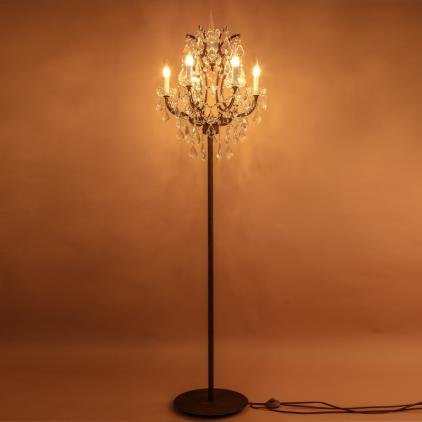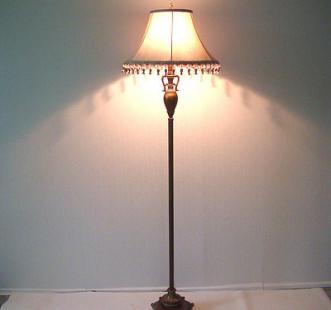LTE: The bottleneck of commercial process is breaking through
From February 15 to February 18, the 2010 Mobile World Congress (abbreviated as MWC) was held in Barcelona, ​​Spain. As a conference organized by the GSM Association (GSMA), the next-generation evolution technology for mobile communications, LTE (Long Term Evolution), has naturally become the focus of industry attention. Public opinion widely believes that LTE will become the mobile broadband technology used by most mobile operators worldwide. At this exhibition, LTE has not only further demonstrated high-bandwidth applications, but the industry has also conducted in-depth discussions on the commercial use of LTE. 2010 will also be the first year of commercial LTE.
Commercial speed-up CDMA operators join in as a whole
The GSM Association welcomed several heavyweight member companies at this MWC—China Telecom, KDDI in Japan, and Verizon Wireless in the United States, all of which were embraced by the GSM Association because of LTE, even including Qualcomm, the leading company in CDMA. On February 15th, the three core CDMA operators mentioned above promised to promote LTE commercial use, thereby obtaining GSMA membership. Qualcomm participates in the GSMA as an associate member and plans to help operators integrate existing mobile broadband technology with LTE.
In fact, Verizon Wireless announced a year ago that it will start commercial LTE as early as this year. Verizon CTO DickLynch said at a press conference at the show that the company's LTE network deployment is progressing well. "We are entering the fourth stage of LTE testing. In the next 60 days, when we have finished testing in Boston and Seattle, we can announce the official commercial development," he said. Tadashi Onodera, chairman and president of KDDI, said he hopes to begin commercial LTE by the end of 2012.
According to data released by the GSM Association at WMC, there are more than 74 mobile operators worldwide who have committed to or have participated in LTE testing or commercial development. The world's first commercial LTE network was recently launched by TeliaSonera in Sweden. In 2010, Verizon Wireless and NTTDoCoMo will commercialize LTE in the United States and Japan, respectively. Even according to the GSM Association, China Telecom had a similar decision. Research institute InfoneTIcsResearch predicts that by 2013, 72 million users worldwide will access the LTE network.
VoLTE seeks common ground while reserving differences, IMS welcomes new opportunities
Voice and SMS transmission are the weaknesses of LTE, because LTE is a transmission network based on packet switching and does not support traditional circuit-switched data transmission. In response to this problem, a series of solutions have been proposed, but none of them can "strike the crowd", so many businesses are in agreement, resulting in several sets of solutions currently on the market, each of which has many businesses behind stand by.
However, with the maturity and development of IMS (Multimedia Subsystem), the IMS-based LTE solution can well realize the transmission of voice and short messages on the LTE network. Operators, equipment vendors and terminal manufacturers all strive to move closer to IMS to solve the LTE defects. Previously, several operators and equipment vendors proposed the "One Voice" Initiative (OneVoiceIniTIaTIve), which refers to the adoption of a single, IMS-based voice solution as the next-generation mobile broadband voice and short message solution.
When this thorny problem was mentioned again at MWC this time, the solution was also locked in IMS-based LTE thinking. At the press conference of the GSM Association held on the afternoon of the opening day of the exhibition, the GSM Association announced the adoption of the "One Voice" initiative to ensure that the mobile communications field transmits voice and short messages in a unified standard on LTE.
According to reports, the VoLTE (VoiceoverLTE) initiative of the GSM Association has been supported by more than 40 organizations, including many leading mobile operators, mobile phone and system manufacturers. The GSM Association will complete the interconnection and roaming of voice calls between LTE networks by the first quarter of 2011.
TD-LTE moves towards global FDD / TDD integration and development
LTE has become the common choice of the world's leading operators in the evolution of next-generation mobile networks. For global operators, make full use of the world's rich TDD (Time Division Duplex) spectrum resources to guide from chips, terminals to system equipment The balanced development of FDD (Frequency Division Duplex) / TDD LTE technology and industry at various levels has become the main idea to strengthen the LTE industry camp, effectively control the total cost of ownership, and quickly enter the commercial operation stage.
In practice of this idea, Chinese companies with TD-SCDMA advantages are at the forefront. At this year's exhibition, Huawei demonstrated to the mobile communication industry from all over the world the end-to-end LTE / SAE (automatic load balancing) solution based on FDD / TDD convergence technology and multi-party HD video interworking services. As one of the SingleRAN @ Broad series of solutions and business experience, Huawei demonstrated TD-LTE chips, terminals, system equipment and business solutions that meet commercial requirements at the exhibition site, and realized LTE mobile broadband through TD-LTE terminals in the form of data cards Extreme multimedia service experience.
As one of the highlights during the exhibition, Huawei also demonstrated the first multi-party high-definition video interworking service based on FDD / TDDLTE wireless access at the same time, including a total of LTE test networks in Barcelona, ​​Germany and Austria4 Fang realized business interoperability, demonstrated real-time high-definition video conferencing, real-time high-definition video surveillance, mobile target location information and other services to global visitors. Key performance such as real-time and mobility.
In addition, Nokia Siemens also demonstrated the TD-LTE Femtocell (indoor micro base station) solution to solve the indoor coverage problem at MWC. This solution will be adopted by China Mobile at the 2010 Shanghai World Expo. In addition, Nokia Siemens also demonstrated the SingleRANLTE solution for TD-LTE and FDD and the FlexiMulTIradio base station that supports both TD-LTE and FDD.
The terminal exceeds expectations Huawei may be earlier than Samsung picking peach
LTE terminals are considered to be the bottleneck restricting the development of LTE, especially the development of mobile phones, so the news that the Japanese operator NTTDoCoMo will show the first batch of LTE mobile phone prototype products at this exhibition before the exhibition has made the industry look forward to. However, this time NTTDoCoMo does not seem to be displayed as scheduled, but in general, there are still a lot of good news about LTE terminals in this exhibition.
Verizon Chief Technology Officer Lynch said that after commercial LTE this year, Verizon will initially use USB (Universal Serial Bus) modems and data cards, and mobile phones will follow. "We previously underestimated the development of LTE terminal chips and mobile phones, and now it seems that its progress is faster than expected." He said. More than one person expressed this view at the exhibition. NGMN (Next Generation Mobile Communications Network) Alliance Chairman Vivek Badrinath and Ericsson Chief Technology Officer HakanEriksson both expressed on different occasions that "LTE phones will appear earlier than expected."
ST-Ericsson told the China Electronics News reporter that the company is strengthening its strategic partnership with China Mobile to promote the development of TD-LTE technology and will further develop its modem product portfolio during 2010 to support a range of Multi-modal solution.
The early providers of LTE terminals are Samsung and LG, and Huawei seems to be taking the lead in LTE terminals. Later in the exhibition, Huawei announced a product E398, which is said to be the world's first three-mode LTE modem. This terminal is backward compatible with 3G and 2GGSM. In December last year, Samsung Electronics provided TeliaSonera ’s commercial LTE network with a USB modem that only supports LTE. At that time, it announced that it would launch an upgraded version of this terminal in the first half of 2010 to support HSPA (high-speed link packet access Technology) and EDGE (enhanced data rate GSM evolution technology) services. Now it seems that Huawei's E398LTE terminal based on Qualcomm chips exceeds Samsung's progress. Huawei did not provide more information about when this terminal will be available, but said that this terminal will be provided to Net4Mobility, an operator jointly formed by Tele2 and Telenor of Sweden. The operator will also open an LTE network this year, and Huawei is also a supplier of its LTE system equipment.
At the exhibition, another Chinese equipment company, ZTE, said that while several LTE terminal products were successively launched in 2010, ZTE was conducting R & D on LTE-based MID (Mobile Internet Device) products, which may be launched in 2011 product.
The speed is getting faster and faster to achieve 1GB per second
Whose speed is fast on UMC, and who is the current network environment, this is a reserved program for the communication industry pursuing faster, higher and stronger. At the 2010 Mobile World Congress, operator Telefonica, with high-speed mobile broadband, and Nokia Siemens conducted a live LTE live demonstration in a real network environment. Through a real commercial LTE base station, Telefonica performed a high-definition video fast download demonstration on a driving truck on the street near Hall 8 and FIRA exhibition center in Barcelona. By comparing the download time and image quality of the same video on the existing HSPA network, visitors experienced the powerful advantages of LTE in data transmission rate.
Although Telstra's operator CSL, which started LTE commercial network testing in September 2009, did not set up a live network at the exhibition, it was still willing to hold a joint press conference with its LTE equipment provider ZTE to announce the first stage of LTE commercial testing Details. According to reports, CSL has loaded 20 LTE base stations on the HSPA network in Hong Kong, China. According to actual tests, the maximum download rate can reach 127M, while the continuous download rate of a single user is about 70M. "LTE performance at 2.6GHz is very good. In fact, if it is not limited to the current LTE terminals, the rate will be higher. This also means that we need to reassess the timetable for the official launch of 4G and the global network coverage. "CSL Chief Technology Officer Deng Yuanxing said. He introduced that CSL plans to deploy LTE in some places within the next 3 to 6 months. "However, HSPA + will exist for many years, and we will deploy LTE at the same time where high-speed data is needed."
The LTE test on the live network is exciting, and the research and development results in the experimental environment are even more exciting. Ericsson successfully demonstrated the LTE / 4G system at this MWC, and its downlink rate actually reached 1GB per second, setting a world record. This world's first demonstration of Ericsson's commercial LTE hardware system uses multi-carrier technology and MIMO (multiple input multiple output) technology. It is with these technologies that it is possible to achieve a speed of 1GB per second. It is reported that the demonstration is configured with four 20MHz carriers, a total of 80MHz, and 4 × 4 MIMO is used at the same time. The data is divided into four independent data streams through the air interface for transmission.
Classical Crystal Floor Light is a kind of floor lamp with Metal and crystal for main material. Floor lamps are generally placed in the rest area of the living room, and sofa, coffee table with, on the one hand to meet the needs of the region lighting, on the one hand the formation of a specific atmosphere. Usually, the floor lamp should not be placed in the area of tall furniture or hinder the activities of the area. These type light used E14/E27/E12/B22 lamp holder. There are many different patterns and designs for customer to choose. We can make light according to customers' requirments.


Classical Crystal Floor Light
Classical Crystal Floor Light,Crystal Floor Light,Design Classics Floor Lighting,Home Goods Floor Lamps
Zhongshan Laidi Lighting Co.,LTD , http://www.idealightgroup.com